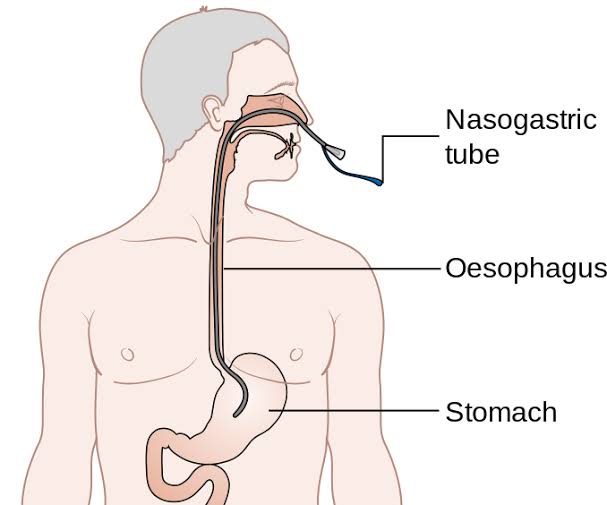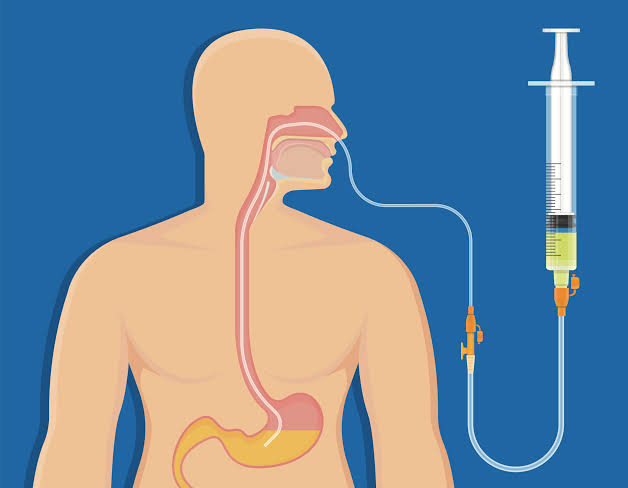Health Desk
Sandeep Dhand Ludhiana
Journalist and Research Analysist
What is a Nasogastric (NG) Tube?
A nasogastric (NG) tube is a medical device that is inserted through the nose, down the esophagus, and into the stomach. It serves various purposes in patient care, primarily related to feeding, medication delivery, and gastric decompression. NG tubes are commonly used in hospitals, care facilities, and sometimes at home for patients who are unable to consume food orally or require stomach drainage.

Types of Nasogastric Tubes
- Short-Term Feeding Tubes (Levin Tube): For temporary feeding or medication administration.
- Decompression Tubes (Salem Sump Tube): Used to remove stomach contents or air to relieve pressure in cases of bowel obstruction, vomiting, or surgery recovery.
Indications for NG Tube Use
Nasogastric tubes are indicated in various clinical situations, including:
- Nutritional Support: When patients cannot consume food orally due to conditions like:
Stroke or neurological impairment
Severe dysphagia (difficulty swallowing)
Surgery involving the mouth, throat, or esophagus
Critical illness requiring prolonged feeding assistance
- Gastric Decompression: To remove excess stomach contents or air in cases such as:
Bowel obstruction

Paralytic ileus (impaired bowel movements)
Post-abdominal surgery
- Medication Administration: For patients who cannot swallow pills or liquids.
- Gastric Lavage: In cases of poisoning or drug overdose, the NG tube may be used to remove harmful substances from the stomach.
How to Insert a Nasogastric Tube
The insertion of an NG tube should always be performed by a trained healthcare professional. The following steps outline the typical process:
- Patient Preparation: Explain the procedure to the patient and position them in a semi-upright position (head tilted slightly forward).
- Tube Measurement: Measure the length of the tube by extending it from the tip of the nose to the earlobe, and then down to the xiphoid process (bottom of the sternum). Mark this point on the tube.
- Lubrication and Insertion: Lubricate the tube’s tip with a water-based lubricant, then gently insert it through the nostril while asking the patient to swallow. This facilitates the passage of the tube down the esophagus.
- Verification of Placement: Once the tube is inserted to the pre-marked length:
Aspirate stomach contents with a syringe and test the pH (should be acidic).
Confirm tube position using an X-ray, which is the most reliable method.
- Securing the Tube: Secure the tube to the patient’s face with adhesive tape to prevent movement or displacement.
Care and Maintenance of a Nasogastric Tube
- Tube Flushing: To prevent clogging, flush the NG tube with water (usually 20-30 mL) before and after administering feedings or medications. This also ensures proper flow and prevents blockages.
- Checking Tube Placement: Regularly check the tube’s position by aspirating stomach contents and confirming the pH or observing for any signs of dislodgment, such as coughing, choking, or discomfort.
- Skin Care: The nostrils and surrounding skin can become irritated from prolonged tube use. Clean the nostrils and the tube site daily, and apply protective barrier creams to prevent breakdown.
- Monitor for Complications: Common complications include nasal irritation, tube clogging, dislodgment, or aspiration (food or liquid entering the lungs). Report any signs of respiratory distress, abdominal discomfort, or vomiting to healthcare providers immediately.
Complications Associated with NG Tubes
- Aspiration: If the tube is misplaced or the patient regurgitates, gastric contents may enter the lungs, leading to pneumonia.
- Nasal and Throat Irritation: Prolonged tube use may cause nasal dryness, sore throat, or nasal ulcers.
- Tube Clogging: This may occur if the tube is not regularly flushed or if medications are not crushed adequately before administration.
- Displacement: The tube may move out of place, leading to ineffective feeding or medication delivery, or potential complications such as aspiration.

When to Contact a Healthcare Provider
Patients or caregivers should seek medical attention if:
The tube becomes blocked, dislodged, or damaged.
The patient experiences persistent nausea, vomiting, or abdominal pain.
There are signs of infection around the tube insertion site (redness, swelling, pus).
The patient exhibits symptoms of aspiration, such as coughing, shortness of breath, or wheezing.
Removal of a Nasogastric Tube
The removal of an NG tube is typically performed once the patient’s condition improves or they can resume normal oral intake. The process is simple:
- Flush the tube with water to clear it.
- Un-tape the tube from the patient’s face.
- Gently pull the tube out while the patient exhales.
Conclusion
Nasogastric tubes are essential in managing patients who need feeding, medication, or stomach drainage but cannot do so orally. Proper care and maintenance, including regular flushing, monitoring placement, and ensuring skin care, are crucial to prevent complications. With the right training, both healthcare professionals and caregivers can ensure the safe and effective use of NG tubes, improving patient outcomes and comfort.
